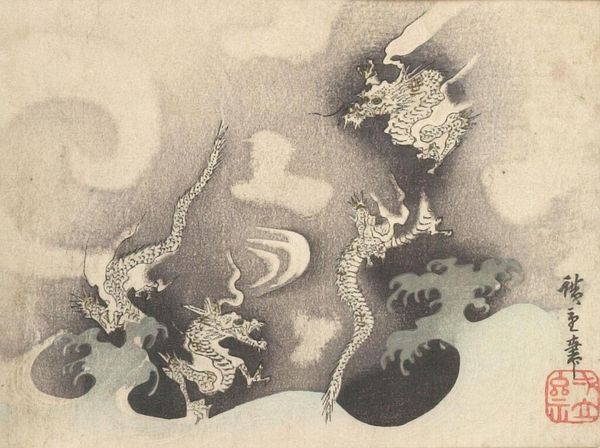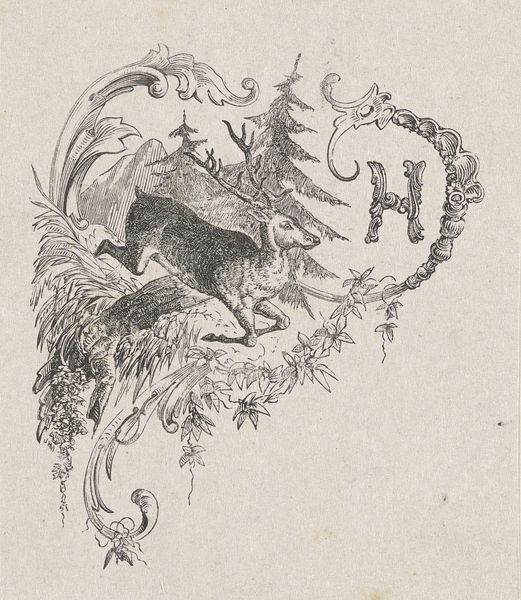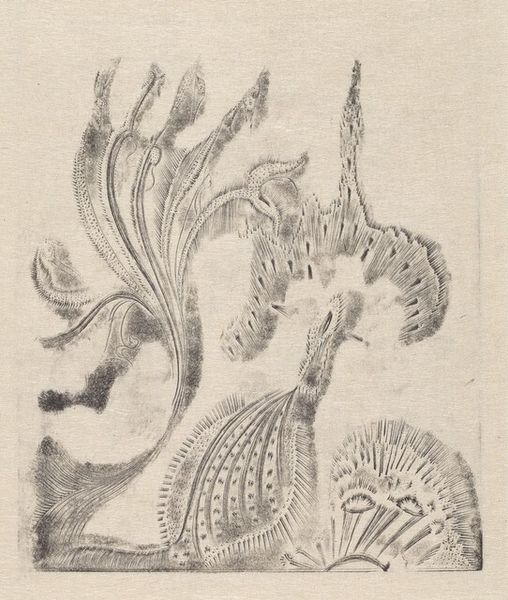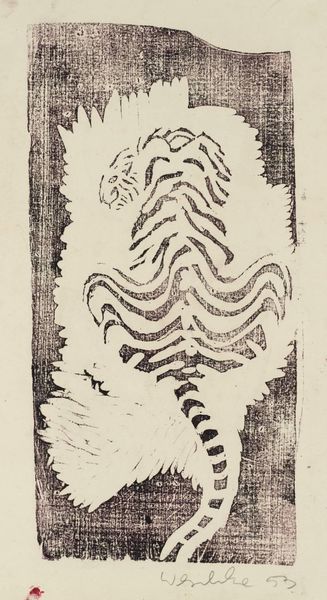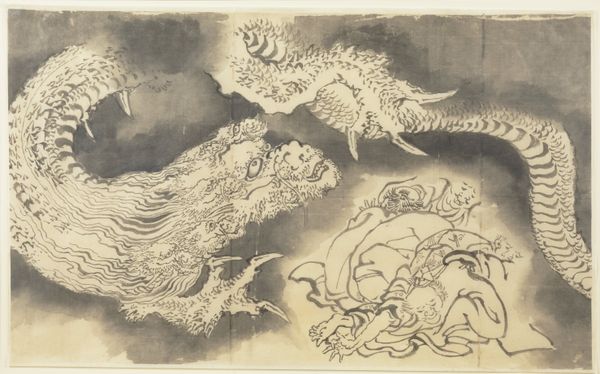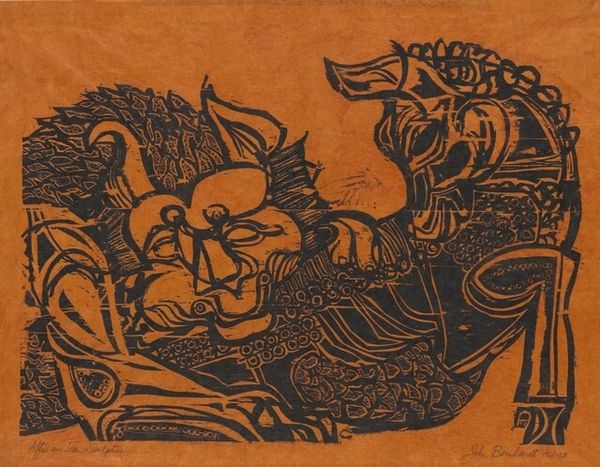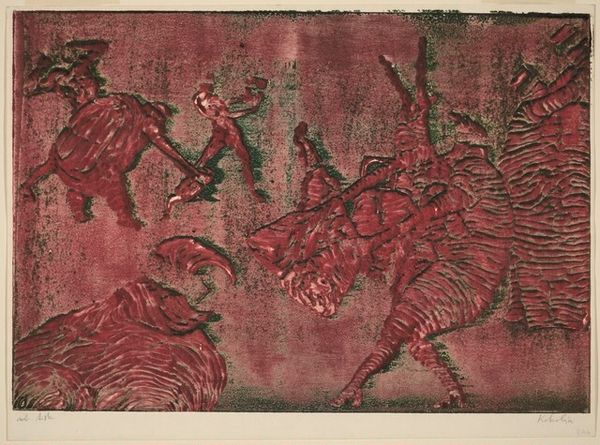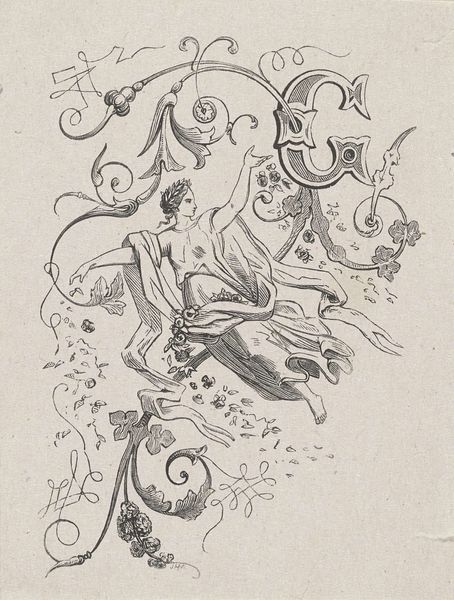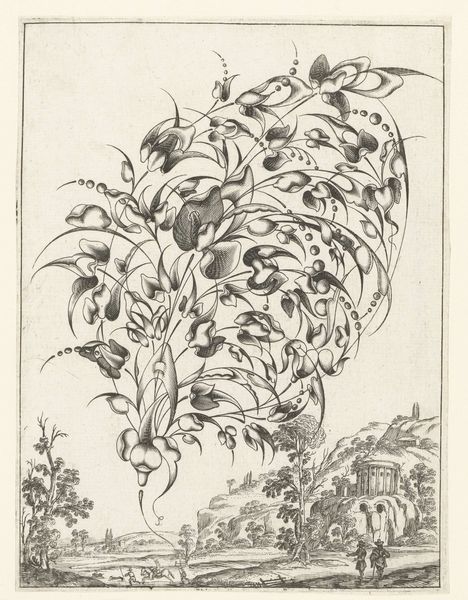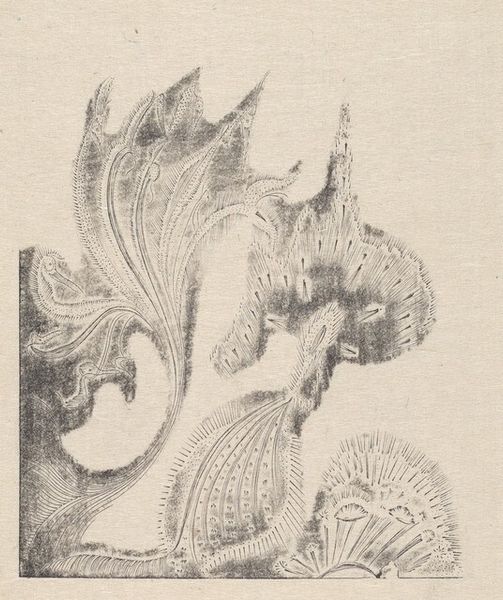
drawing, print, etching
#
drawing
# print
#
etching
#
etching
#
linocut print
Copyright: National Gallery of Art: CC0 1.0
Editor: Here we have Misch Kohn’s "Red Beast", created as an etching or linocut print. There’s a real energy in this piece. It's simultaneously unsettling and kind of charming, a creature composed of energetic red lines. What is your interpretation of this work? Curator: This print, like much of Kohn's work, exists within a fascinating period of post-war anxiety and the growing commercialization of art. I see the "beast," not necessarily as monstrous in the traditional sense, but as a commentary on the forces at play in shaping culture, institutions, and even artistic expression. Does the rawness and almost primal feel resonate with any social critiques for you? Editor: It does. The creature's abstracted form, built from fragmented lines, might suggest a fracturing of societal norms. Are you implying this relates to the role and influence of galleries and institutions on artwork in society? Curator: Exactly. Consider the context. Abstract Expressionism was dominant, but artists like Kohn were exploring different avenues. The “Red Beast” pushes back against idealized forms, almost questioning what society considers 'beautiful'. Look at the material. Kohn chose a medium accessible to broader audiences, subverting the notion of elite art forms in galleries. Is the beast a figure that society finds challenging or unnerving to embrace? Editor: That’s interesting! It never occurred to me. I always viewed prints, such as etching, simply as a technique that renders bold texture! Now, considering your viewpoint, the use of an "inferior art form," may highlight the challenges non-conformist figures face when up against societal views. Curator: Precisely. And the vibrant red amplifies this sense of defiance. Understanding art involves reading into the unspoken politics and anxieties influencing its creation. Editor: I will remember this! Viewing it within its social context certainly enriches the understanding. Now the “Red Beast” is less like a spontaneous piece of self-expression, but more a bold assertion about society’s shaping of what should and shouldn’t be viewed. Curator: Absolutely, a lens to dissecting how artworks perform as objects of politics, not merely passive figures.
Comments
No comments
Be the first to comment and join the conversation on the ultimate creative platform.


